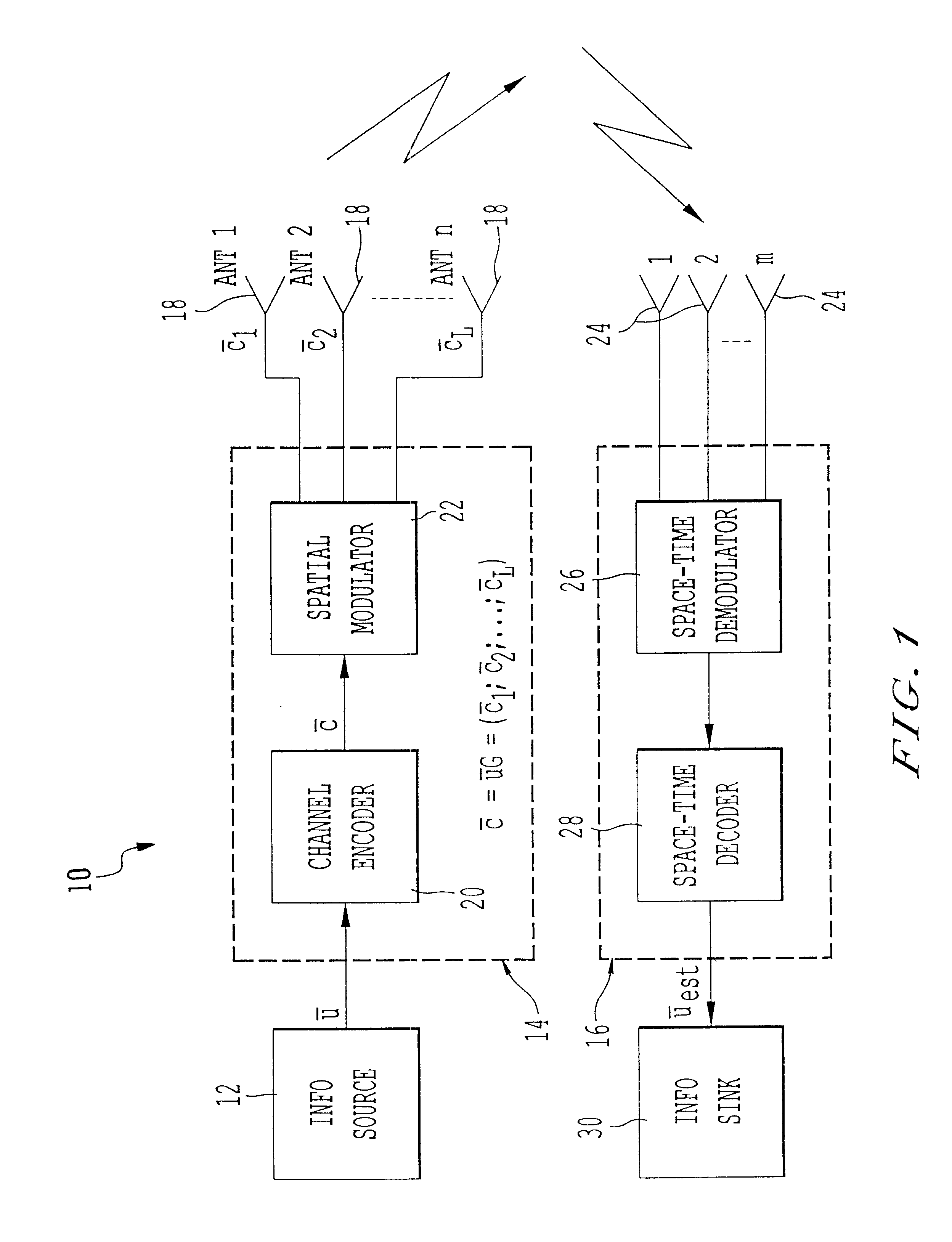System employing threaded space-time architecture for transporting symbols and receivers for multi-user detection and decoding of symbols
- Summary
- Abstract
- Description
- Claims
- Application Information
AI Technical Summary
Benefits of technology
Problems solved by technology
Method used
Image
Examples
Embodiment Construction
[0021]The description below shall be organized as follows: the system description and a brief review of previous work on the design of space-time modems are presented in Section 1. In Section 2, the optimal receiver for joint detection and decoding is identified, and a set of iterative receivers that provide a trade-off between complexity and performance is presented. The application of iterative receivers to the layered space-time architecture is discussed in Section 2.3. In Section 3, a novel approach for joint space-time transmitter / receiver design is presented that combines efficient multi-user detection with space-time coding. Algebraic space-time code constructions for the new architecture are provided in Section 3.2. Comparisons of the various layered architectures in terms of efficiency and achievable diversity order are presented in Section 4, while simulation results are compared in Section 5. Finally, Section 6 presents conclusions.
[0022]1. Overview of Space-Time Concepts...
PUM
 Login to View More
Login to View More Abstract
Description
Claims
Application Information
 Login to View More
Login to View More - R&D
- Intellectual Property
- Life Sciences
- Materials
- Tech Scout
- Unparalleled Data Quality
- Higher Quality Content
- 60% Fewer Hallucinations
Browse by: Latest US Patents, China's latest patents, Technical Efficacy Thesaurus, Application Domain, Technology Topic, Popular Technical Reports.
© 2025 PatSnap. All rights reserved.Legal|Privacy policy|Modern Slavery Act Transparency Statement|Sitemap|About US| Contact US: help@patsnap.com



